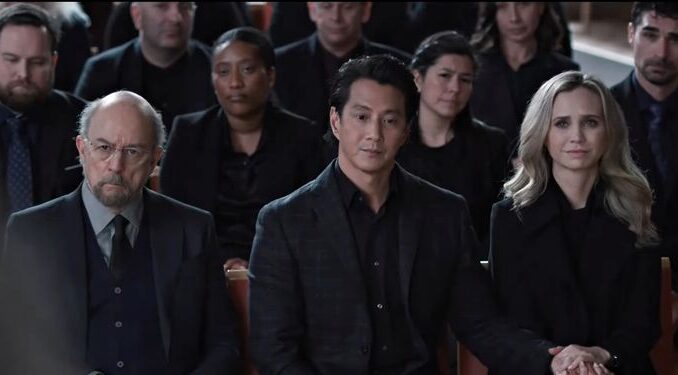
In a world overflowing with television shows, few manage to stand out. Fewer still manage to capture the hearts of millions across cultures, languages, and continents. But The Good Doctor? It didn’t just stand out—it soared. From its very first episode, it became a global sensation, turning heads and tugging hearts in equal measure. What is it about this series that resonates so deeply? Why do people from Tokyo to Toronto, from Sydney to São Paulo, find themselves moved, inspired, and forever changed by a medical drama? The answer lies not only in the stethoscopes and surgical gloves—but in the soul of the show itself.
At its core, The Good Doctor is about human connection. Yes, there are thrilling surgeries, ethical dilemmas, and high-stakes hospital politics. But beneath all that clinical precision is a beating heart—a story about belonging, acceptance, and empathy. The show’s protagonist, Dr. Shaun Murphy, is a young surgeon with autism and savant syndrome. He’s brilliant. He’s awkward. He’s compassionate. And he’s different. Very different. But that’s exactly why audiences love him.
In a world that often praises sameness and punishes difference, The Good Doctor dares to ask: What if being different is actually a gift? What if neurodiversity could change lives, save lives, and inspire change? Dr. Shaun Murphy is not your typical medical drama lead. He doesn’t deliver snappy one-liners or lead with ego. Instead, he leads with honesty. With raw, unfiltered emotion. With a childlike sincerity that disarms even the most skeptical patients and colleagues. And it’s that sincerity—brought to life with staggering depth by Freddie Highmore—that forms the emotional backbone of the series.
Freddie Highmore’s performance is nothing short of extraordinary. Portraying someone on the autism spectrum requires care, research, and immense sensitivity—and Freddie has done the work. From the subtle body language to the careful cadence of speech, from avoiding eye contact to the emotional meltdowns when overwhelmed, he captures Shaun’s reality with authenticity and respect. And that dedication hasn’t gone unnoticed. Fans, families, and even experts on autism have praised the portrayal for opening up conversations that society often avoids. In fact, it’s not uncommon to hear fans say, “Watching this show helped me understand my son,” or “Shaun reminds me of my brother.” It’s that kind of personal connection that transforms a good show into a beloved one.
But it’s not just Shaun’s story that drives the show. The supporting cast is rich, complex, and full of growth. Characters like Dr. Glassman, Shaun’s mentor and father figure, or Dr. Claire Browne, Shaun’s emotionally intuitive colleague, provide layers of depth and contrasting viewpoints. They struggle with their own demons, wrestle with impossible choices, and evolve in ways that feel incredibly real. And perhaps most importantly, they learn from Shaun—just as he learns from them.

The writing is another element that sets The Good Doctor apart. It balances medical urgency with emotional vulnerability. Episodes often pose moral questions: Should a risky surgery be attempted to save one life even if it might cost another? How do doctors deal with failure—or death? What happens when love enters the workplace? And how do you support a colleague who experiences the world differently? These aren’t just medical questions. They’re human ones. And the show answers them not with easy fixes, but with nuance.
Then there’s the cinematography. The show’s visual style is both clinical and intimate. You feel the tension in the operating room, the stillness in the quiet moments, the weight of a patient’s final breath. Even the musical score is carefully chosen to amplify emotion without manipulating it. Every heartbeat, every sigh, every silence matters. The show doesn’t rush through its storytelling. It lets the audience sit with discomfort, celebrate victories, and mourn losses.
But maybe the most beautiful thing about The Good Doctor is how it changes people—not just the characters on screen, but the viewers at home. It has made people more compassionate, more curious, and more aware. It’s sparked real-world conversations about inclusivity in the workplace, accessibility in education, and how society defines intelligence and success. By shining a spotlight on neurodiversity, the show helps break down stigma. It reminds us that intelligence isn’t always loud, that love isn’t always conventional, and that empathy can be taught—and learned.
The global appeal of The Good Doctor is also a testament to its universal themes. It doesn’t matter if you’re a nurse in New York, a student in Seoul, or a parent in Paris—everyone knows what it feels like to want to be understood. Everyone knows what it’s like to be underestimated. And everyone, at some point in life, has felt like an outsider. Shaun’s journey becomes our journey. His triumphs feel personal. His heartbreaks sting like our own.
With each passing season, the show takes risks. It doesn’t recycle plotlines or rely on cheap drama. It introduces new characters, confronts new challenges, and allows old characters to grow—even if it means saying goodbye to some. And that willingness to evolve keeps the show fresh, bold, and emotionally honest.
Behind the scenes, Freddie Highmore wears multiple hats—not just as the star, but as a writer, director, and executive producer. His influence ensures that the show maintains its authenticity and doesn’t lose sight of its mission. He has said in interviews that portraying Shaun has changed his life—and it shows. There is a reverence in his performance, a gentleness, and a deep sense of responsibility to tell this story right.
